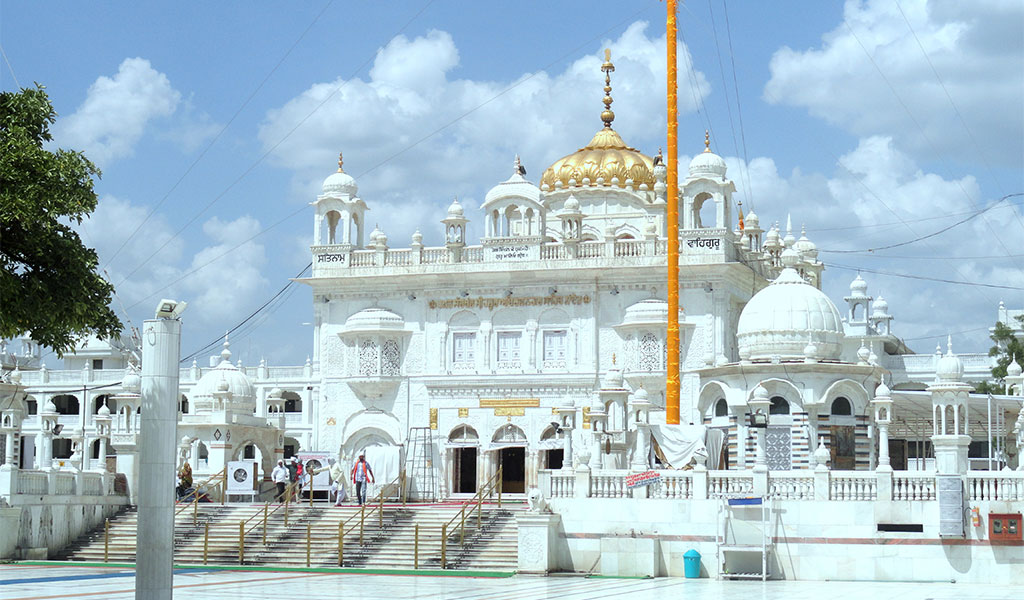
Gurdwara Hazoor Sahib, also known as Takht Sri Hazoor Sahib, stands as one of the five Takhts (seats of temporal authority) of Sikhism. Located in Nanded, Maharashtra, India, on the banks of the Godavari River, this Gurdwara holds profound significance as the final resting place of Guru Gobind Singh Ji, the tenth Sikh Guru. It is a place of deep reverence and pilgrimage for Sikhs worldwide, embodying the culmination of the Guru's earthly journey and the continuation of the Sikh spiritual lineage.
A History Etched in Time:
Guru Gobind Singh Ji arrived in Nanded in 1708. It was here that he spent his final days, imparting wisdom and guidance to his followers. After being wounded, the Guru declared that the Guru Granth Sahib would be the eternal Guru of the Sikhs, before passing away on October 7, 1708. The Gurdwara Hazoor Sahib was built on the spot where Guru Gobind Singh Ji's mortal remains were cremated. The construction of the original structure was commissioned by Maharaja Ranjit Singh, a prominent Sikh ruler, in the 19th century.
Significance and Symbolism:
Gurdwara Hazoor Sahib is not merely a memorial; it is a living testament to the enduring legacy of Guru Gobind Singh Ji. The Gurdwara complex houses several sacred relics associated with the Guru, further enhancing its sanctity. The presence of these relics, combined with the historical significance of the location, makes Hazoor Sahib one of the most important pilgrimage sites for Sikhs. It serves as a reminder of the Guru's unwavering commitment to Sikh principles, his courage in the face of adversity, and his ultimate sacrifice.
Architectural Grandeur:
The architecture of Gurdwara Hazoor Sahib is a blend of traditional Sikh and Rajput styles. The main building is a magnificent structure with intricate carvings, a gleaming golden dome, and tall flagstaffs. The use of marble and gold leaf adds to the grandeur of the Gurdwara. The serene atmosphere within the complex provides a space for reflection, prayer, and spiritual contemplation. The langar, a community kitchen, operates continuously, serving free meals to all visitors, regardless of caste, creed, or social status, embodying the Sikh principle of selfless service (seva).
A Place of Pilgrimage and Devotion:
Gurdwara Hazoor Sahib attracts thousands of pilgrims every year, who come to pay their respects to Guru Gobind Singh Ji and to immerse themselves in the spiritual ambiance of the Gurdwara. The Gurdwara is particularly significant during Hola Mohalla, a Sikh festival that coincides with Holi, when large congregations gather to celebrate and commemorate the Guru's life.
Continuing Legacy:
Gurdwara Hazoor Sahib continues to be a source of inspiration and guidance for Sikhs worldwide. It serves as a reminder of the importance of living a life dedicated to Sikh values and principles. The Gurdwara is managed by a committee that ensures the smooth running of its daily affairs, including the performance of religious ceremonies, the maintenance of the complex, and the provision of langar services.
A Beacon of Faith:
Gurdwara Hazoor Sahib stands as a beacon of faith, reminding Sikhs of their rich heritage and the sacrifices made by their Gurus. It is a place where devotees can connect with their spiritual roots, renew their commitment to Sikhism, and find solace in the divine presence. The timeless legacy of Guru Gobind Singh Ji continues to inspire and guide Sikhs from all walks of life, making Gurdwara Hazoor Sahib a truly sacred and significant destination.